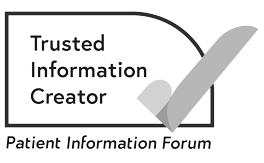Cryotherapy for skin cancer
What is cryotherapy for skin cancer?
Cryotherapy uses liquid nitrogen to freeze and destroy cancer cells. It is also called cryosurgery. It is a very quick way of treating:
- some small, low-risk skin cancers, such as a type of basal cell carcinoma (BCC) called superficial BCC
- areas of sun-damaged skin called actinic keratoses - if left untreated, this condition sometimes develops into squamous cell carcinoma.
Having cryotherapy for skin cancer
The doctor sprays liquid nitrogen onto the area to freeze it. The skin turns white while the area is frozen. It can be painful. Some people describe it as feeling like a bee sting.
You may need more than 1 session of treatment to get rid of the cancer completely.
What to expect after cryotherapy for skin cancer
After treatment, the area may ache or throb for a few minutes.
After about 1 hour, it is common for the area to blister. The blister may become filled with blood and be painful. Your doctor or nurse may need to drain the fluid using a sterile needle. But the top of the blister should be left intact. It will gradually scab over.
About 2 weeks after your treatment, the scab drops off. You may have a scar in the area. This will be paler than the surrounding skin.
You can visit our Online Community skin cancer forum to talk to people who have been affected by skin cancer, share your experience, and ask an expert your questions.
About our information
-
References
Below is a sample of the sources used in our skin cancer information. If you would like more information about the sources we use, please contact us at informationproductionteam@macmillan.org.uk
Keohane SG, Botting J, Budny PG, et al. British Association of Dermatologists guidelines for the management of people with cutaneous squamous cell carcinoma 2020. The British Journal of Dermatology. 2021;184(3): 401–414. Available from www.doi.org/10.1111/bjd.19621 [accessed May 2024].
Nasr I, McGrath EJ, Harwood CA, et al. British Association of Dermatologists guidelines for the management of adults with basal cell carcinoma 2021. The British Journal of Dermatology. 2021;185(5): 899–920. Available from www.doi.org/10.1111/bjd.20524 [accessed May 2024].
Sharma A, Birnie AJ, Bordea C, et al. British Association of Dermatologists guidelines for the management of people with cutaneous squamous cell carcinoma in situ (Bowen disease) 2022. The British Journal of Dermatology. 2023;188(2): 186–194. Available from: www.doi.org/10.1093/bjd/ljac042 [accessed May 2024].
-
Reviewers
This information has been written, revised and edited by Macmillan Cancer Support’s Cancer Information Development team. It has been reviewed by expert medical and health professionals and people living with cancer. It has been approved by Senior Medical Editor, Professor Samra Turajlic, Consultant Medical Oncologist.
With thanks to: Dr Stephanie Arnold, Consultant; Kerry Jane Bate, Advanced Nurse Practitioner; Dr Philippa Closier, Clinical Oncologist; Sharon Cowell-Smith, Macmillan Advanced Nurse Practitioner Skin Cancers; and Dr Benjamin Shum, Medical Oncologist.
Thanks also to the other professionals and people affected by cancer who reviewed this edition, and to those who shared their stories.
Our cancer information has been awarded the PIF TICK. Created by the Patient Information Forum, this quality mark shows we meet PIF’s 10 criteria for trustworthy health information.
The language we use
We want everyone affected by cancer to feel our information is written for them.
We want our information to be as clear as possible. To do this, we try to:
- use plain English
- explain medical words
- use short sentences
- use illustrations to explain text
- structure the information clearly
- make sure important points are clear.
We use gender-inclusive language and talk to our readers as ‘you’ so that everyone feels included. Where clinically necessary we use the terms ‘men’ and ‘women’ or ‘male’ and ‘female’. For example, we do so when talking about parts of the body or mentioning statistics or research about who is affected.
You can read more about how we produce our information here.
Date reviewed

Our cancer information meets the PIF TICK quality mark.
This means it is easy to use, up-to-date and based on the latest evidence. Learn more about how we produce our information.



